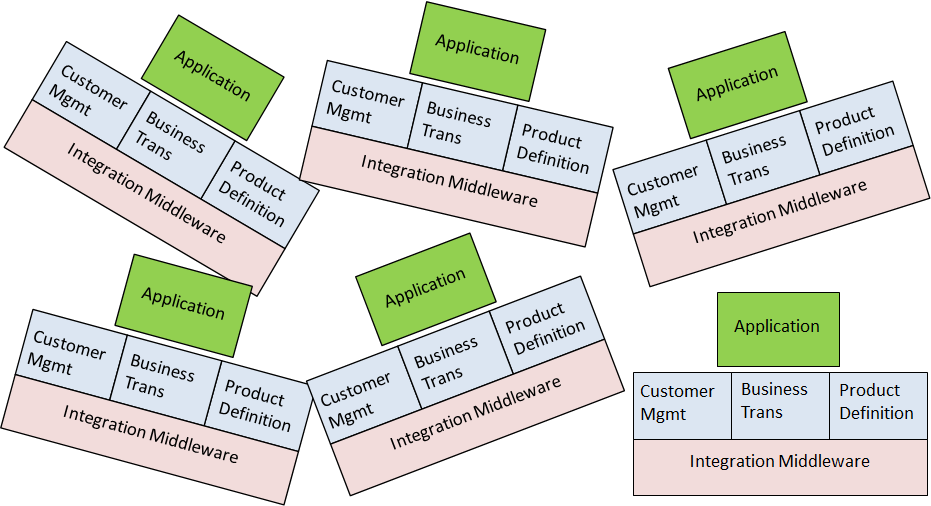The Architecture of Everything
There are lots of complex books and articles written on enterprise architecture or enterprise application integration. The debates continue into meaningless arguments about Agile versus waterfall methodologies. For the majority of Commercial Industries and Government enterprise systems within North America there are three basic functions that should be managed at the Enterprise level while still allowing each business specific project to run as a small agile project.
The three enterprise components are:
1. A common Customer/Stakeholder Management Application
• A Person, organization or location that match to the real world (the entity)
• Each entity can have many roles: consumer; employee; organization; supplier; staff; partner; etc.
2. A common method of handling all types of Transactions
• Identifies who did what, when and where
• When money is involved the business transaction will trigger a subsequent series of financial transactions
3. A common method of defining all Products and services within the enterprise
• Define the products and services as data
• Develop a user interface to allow product experts (business) to define or change their own products
1. A common Customer/Stakeholder Management Application
• A Person, organization or location that match to the real world (the entity)
• Each entity can have many roles: consumer; employee; organization; supplier; staff; partner; etc.
2. A common method of handling all types of Transactions
• Identifies who did what, when and where
• When money is involved the business transaction will trigger a subsequent series of financial transactions
3. A common method of defining all Products and services within the enterprise
• Define the products and services as data
• Develop a user interface to allow product experts (business) to define or change their own products
In other words, centralize the development of these three functions and then get the heck out of the way and let each program area or department have a small team develop customized solutions for each department. Most of the reusable components that the business teams use will be located within the three enterprise wide functions.
The reason that most organizations Enterprise Information Technology looks as it does is a function of how the systems were historically developed. Each Department would initiate their own project and then build, or purchase, a solution just for their own department. With each unique departmental or Program area solution comes an unwanted duplication of: the Customer File; the way Business Transactions are handled and the way Products and services are defined. If we were to draw the application architecture for a typical enterprise it would look something like the following diagram:
The reason that most organizations Enterprise Information Technology looks as it does is a function of how the systems were historically developed. Each Department would initiate their own project and then build, or purchase, a solution just for their own department. With each unique departmental or Program area solution comes an unwanted duplication of: the Customer File; the way Business Transactions are handled and the way Products and services are defined. If we were to draw the application architecture for a typical enterprise it would look something like the following diagram:
There is a better way. With a little bit of planning and making use of the service oriented architecture amd micro-services the Enterprise view would look something like the picture below. One and only one way of handling: the Customer, the way transactions are handled and the way Products and Services are defined.
The development cost difference between these two views of the enterprise for a large Corporation is staggering. It is very common to see Companies spending hundreds of millions for all of the disparate systems in their Enterprise. i.e. the Chaos created by a lack of Systems Integration! Following the above application architecture versus doing it one application at a time will result in at least a ten fold decrease in costs and compleity. The difference is so dramatic that most folks have a hard time believing it. Hence the section on "Track Record" on this Web Site. The on-going maintenance of the enterprise makes the price difference even greater.

